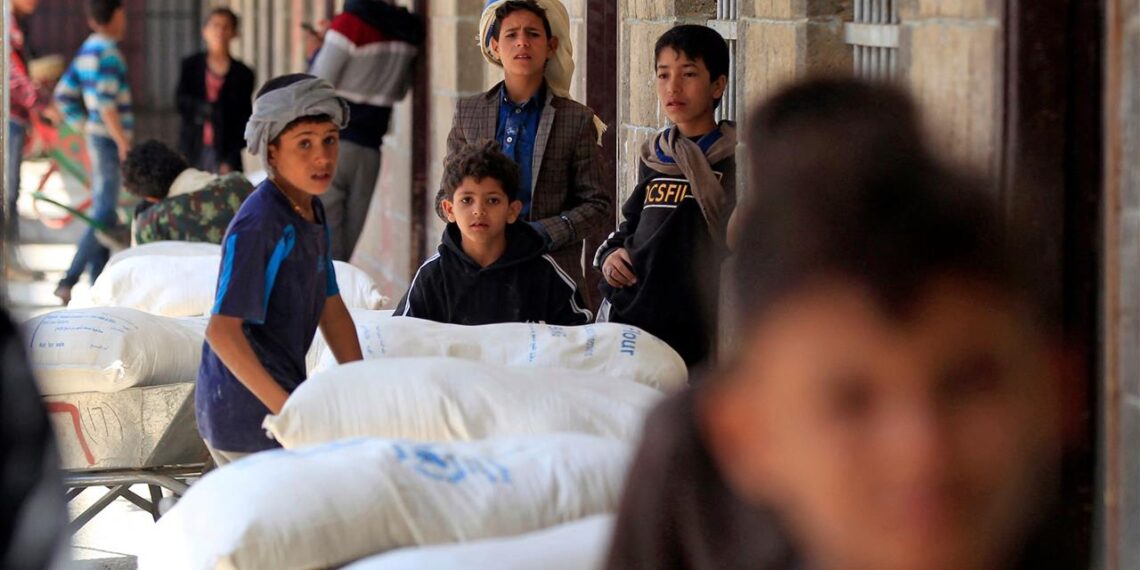WFP has announced considerable cuts on the food assistance program to the people in Yemen, raising further humanitarian concerns.
Further drastic cutbacks to food assistance to Yemen have been confirmed by the World Food Programme in recent days. Millions of Yemeni people who are already enduring a catastrophe cannot receive adequate food as a direct outcome.
Two days ago, the WFP announced that insufficient finances compelled them to implement restrictions.
The center listed further justifications for the approach, including the state of the world economy and the ongoing impact of the Ukraine war on global trading. “Critical funding gaps, global inflation and the knock-on effects of the war in #Ukraine have forced @WFP in #Yemen to make some extremely tough decisions about the support we provide to our beneficiaries,” WFP explained in a tweet.
With the increased restrictions, the WFP will restrict the assistance to delivering food aid to five million people, down from the 13-million who used to be covered. Additionally, the new policy meets 50% of the daily food needs of the remaining groups. Only 25% of the daily demands of the other eight million people will be addressed in the new policy.
At least 17 million Yemenis, who are trapped in a lengthy conflict and an economic downturn, are in urgent need for food assistance. The number comprises over half of the Yemen population, roughly 29.83 million in 2020.
In addition, resilience and livelihood initiatives, and school meals and food projects will be curtailed for over 4 million people, according to the WFP, the UN’s division for food aid. That means only a 1.8-million group will be able to keep receiving these services.
A six-year offensive by the Saudi-led coalition, that followed years of civil war in Yemen, contributed to the present catastrophic circumstances.
WFP Policy
Due to a shortage of funding, earlier reductions in WFP food assistance were announced late last year. Only 25% of the $2 billion the UN estimated it would require from foreign donors in 2022 for Yemen was ultimately realized.
It is anticipated that 19 million Yemenis would be in need of food aid in the current year. The figure shows the rise from the 17.4 million estimated for now. 7.3 million of them will experience hunger at an emergent intensity.
In Yemen, there are over 2 million people, under five, who are acutely malnourished, UNICEF believes. Among whom, 400,000 are anticipated to experience severe malnutrition that poses a hazardous risk in the near future.
Yemen’s famine situation has started to get worse following the Russian war against Ukraine that has disrupted the world’s wheat sources. Food costs, which have already heavily increased, may rise further as a result of India’s restriction on wheat exports.
Eight years ago, supported by a popular uprising, Houthi troops overran Sanaa, the country’s capital, and the administration withdrew. The events led an alliance led by Saudi Arabia to kick off a military intervention a year later to support the regime.
In the midst of a Saudi-led alliance blockade on Yemen’s major ports, the economy has crumbled. Energy and food access as well as non-essential goods entering the nation have been restricted by the blockade.
Additionally, the movement of products and fuel across the nation has been limited by the conflicting parties.
Sources outside the central regime in Sanaa issued a warning on Friday warning that the country’s supply of wheat might run out in less than a month. The source encouraged member states of the EU to assist in securing new sources for wheat to substitute Russia and Ukraine.








